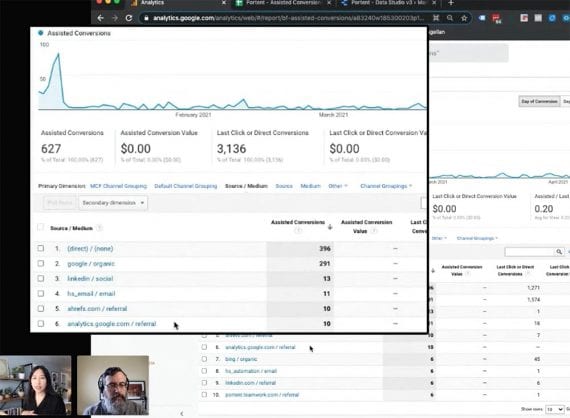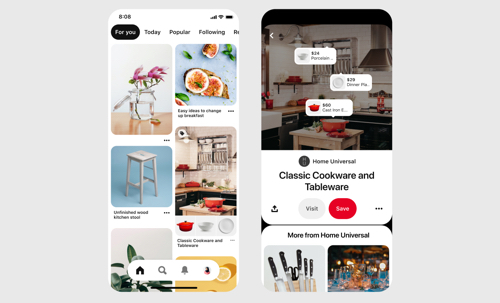Pro-tip: You can generally expect Prime Day numbers to fall in line with Black Friday and Cyber Monday, so if you have data from those sales events, use it to determine your inventory strategy for the remainder of Q4.
On Monday, a retro kitchen and home goods brand leveraged Amazon’s Demand-Side Platform (DSP) to raise product awareness with early browsers. The result? A massive 180 return on ad spend (ROAS).
Even during a sales event created by Amazon solely for Prime subscribers, members are willing to check out the competition. As we mentioned, nearly 90% of shoppers check at least one other website for deals on Prime Day.
Keep in mind, now is not the time to take your foot off the gas as we head into the holiday shopping season. Following Prime Day, many major retailers including Walmart and Best Buy are rolling out Black Friday-like deals (well ahead of the traditional holiday shopping season).
The Impact of the Pandemic on Prime Day
“Thanks to a Prime Day Deal feature including a 40% discount, along with a bump in ad spend, one of our premium beauty brands had their best Prime Day yet. The featured ASIN skyrocketed to the #1 position for the term “facial masks”. We typically sell about 800 units of this item per week but on Monday alone we sold almost 200,000!”
Wait! There’s more. Be on the lookout for Tinuiti’s Amazon Prime Day data recap and formal analysis next week.
“The month leading up to Prime Day, we expanded our upper funnel efforts, targeting people in relevant Amazon categories that aligned with the products we knew we’d be promoting. We wanted to educate customers on our products weeks leading up to Prime Day knowing that customers were doing extensive research as they prepared their cart. As a result, after the first day of Prime Day, we were at 170% of forecasted units.”
With its own free-shipping offering for members and a sprawling third-party marketplace, Walmart is the most popular alternative for Prime Day deals. According to our research, two-thirds of those who shop on Prime Day will also check Walmart for deals. Target is in second place, followed by Google, Best Buy, and eBay.
– Brittany Levine, Specialist, Amazon & Marketplace Channels at Tinuiti
From powerful data to early promotion and sophisticated creative, here’s a look at the most successful advertising strategies and tactics our experts implemented on Prime Day 2021.
Deep Discounts and Badges Attract Customers
Monitor returns and customer feedback: It’s possible you experienced a successful Prime Day but now you’re noticing an influx of returns with negative feedback flooding in. Although nobody enjoys reading through painful feedback, this is another learning lesson: Optimize your product copy/images and take a closer look to determine where content is not clear.
– Ken Magner, Senior Specialist, Marketplaces at Tinuiti Our research also indicates women strongly prefer Target as a number two choice, at 52%, while among men, Google (46%) and Best Buy (44%) are almost as popular as Target (47%) as the second-favorite Prime Day alternative. Fully 39% of male Prime Day shoppers will also check eBay, 35% more than women. According to Adobe Analytics data, total online retail sales in the United States during Amazon’s 48-hour Prime Day surpassed billion — 6.1% higher than overall e-commerce transactions generated by the 2020 event. The self-made shopping holiday brought in nearly .6 billion on Monday and .4 billion on Tuesday, making Monday the biggest day for digital sales in 2021.
– J. Cole, Specialist, Marketplace Programmatic at Tinuiti
Think beyond Amazon: Brands (including Amazon) are leveraging external media like TikTok and Instagram to drive deals to Amazon. Merchants can capitalize on the opportunity in the short term with targeted placements on and off the Amazon platform, as well as through email and social campaigns promoting specials to subscribers and followers. Credit: Tinuiti’s 2021 Amazon Prime Study
But that growth also raised key questions for brands and advertisers in 2021. Now that vaccinations are widespread and restrictions on work, leisure, and shopping are easing, will Prime membership and Prime Day still be appealing? Will the new buying habits that took hold while people were stuck at home persist as society reopens?
And although the majority of Prime members are extremely loyal, with 57% saying they don’t plan to cancel their memberships in the coming year, they do have a wandering eye. According to our study, almost 90% of Prime members said they would comparison shop on sites such as Walmart and Target on Prime Day.
In advance of Prime Day, many brands will have the opportunity to apply or be selected to participate in a Lightning Deal or Prime Day Deal. An Amazon Lightning Deal is a promotion with a limited number of discount offers on an item for a short period of time. These premium deals can be found throughout Amazon.com, and are available one per customer, until either the promotional period (typically 4-hour blocks) for the deal expires or all the available promotional discounts are claimed.
The early bird gets the worm. The same goes for advertisers who invested early in promotion leading up to Prime Day. At Tinuiti, we typically recommend brands increase their budgets and bids in advance of the event to ensure they are building consideration for products as consumers conduct their research and save items to cart.
How to Channel Prime Day Findings Into Q4 Roadmap
Pro-tip: Advertising to the audiences available within the Amazon Demand-Side Platform (DSP) can help increase your brand awareness both on and off Amazon. Through Amazon’s DSP, you can keep your brand messaging consistent with a full-funnel strategy. To learn more, check out “The Amazon Demand Side Platform (DSP): Everything You Need to Know”
Despite the date being a moving target up until the last minute, Amazon Prime Day 2021 generated record-breaking sales across all categories including electronics, baby care, home goods, and more.
In an interview with Forbes, Tinuiti’s Sr. Director of Search and Enterprise, Nancy McLaughlin emphasized the importance of using existing data around customer engagement, advising brands to “create a strategy that is built for their consumer with their advertising data collection and their brand growth goals in mind”.
Amazon became a lifeline for consumers during the pandemic and subscriptions to its Prime membership club surged in 2020. Amazon now boasts more than 200 million Prime members worldwide. In the U.S., analysts estimate Prime membership in 2020 grew 25% to 147 million—more than half the nation’s adult population.
Regardless of your product or business, this year it was absolutely vital for brands to have a sophisticated Prime Day advertising strategy on and off Amazon’s platform. And for those who did their homework – the payout was worth it.
There are still a number of ways to put your own Prime Day data to good use in Q4. Here’s how we recommend using your Prime Day data to prep for Black Friday, Cyber Monday and overall holiday sales (just around the corner):
Reflect on the data: The first thing you want to do is analyze what worked and what did not. Take a look at your data to identify strong and weak performing items including products, campaigns, ad groups, specific keywords, and bids. That way you can see what performed efficiently and use this data moving forward to make optimizations in Q4.
Get your inventory ready now: Post-Prime Day is also a good time to figure out how effective your inventory launch process is and if it needs refinement or sophistication. For example, did you overstock, and now you’re facing those unwanted long-term FBA storage fees? Or maybe you ran out of inventory too quickly? Either way, these are signals that you need to advance your inventory planning strategy prior to the holiday shopping season.






